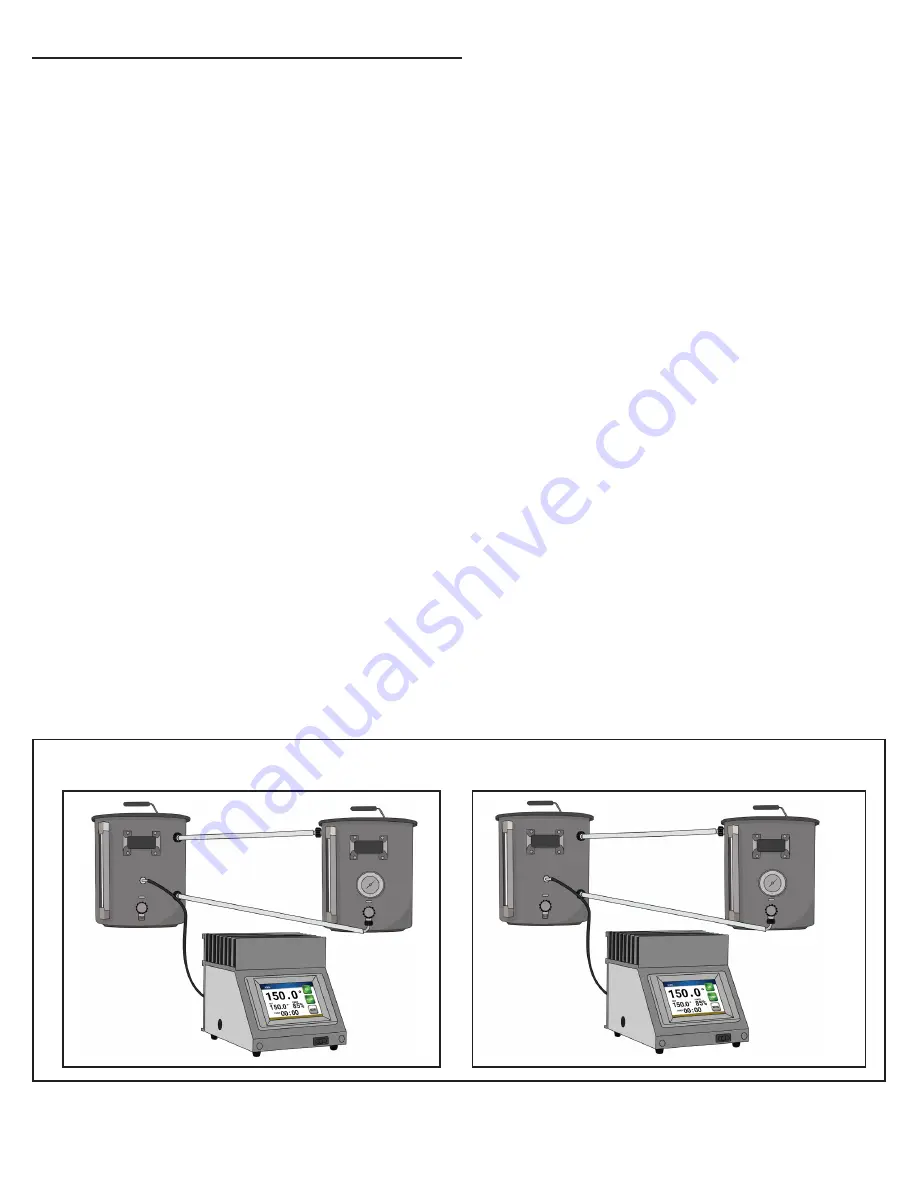
BrewCommander™
© Blichmann Engineering, LLC 2019
15
ADVANCED SETTINGS
MASH HEAT RATE: 1Deg
RIMS OFFSET:
see Mashing section below
General Operation
It is important to be aware that when using a HERMS Coil during a mash the temperature readings taken in the HERMS kettle (typically the HLT) will be higher
than the actual temperature in the mash. This difference varies depending on rate of flow, whirlpooling in the HERMS vessel, and temperature losses unique to
the system. When using the RIMS Offset feature, the temperature displayed on the controller will always be the measured value from the temperature sensor
minus the programmed RIMS Offset value in the advanced settings. If using the RIMS PROTECT feature, whenever the pump is cycled from ON to OFF, it will
automatic extinguish the burner to prevent scorching.
Heating the Strike Water
A unique feature of HERMS systems is that there are many different ways to achieve the heating of strike water. These different methods have unique pros and
cons and varying equipment needs. Experimentation and practice with your particular system is the only way to truly fine tune strike water temperature for
your mash.
Method 1 is to recirculate the mash strike water through the HERMS coil while heating the HLT.
Method 2 is to heat the HLT (where the HERMS coil is located) to the desired temperature, while heating the strike water in your boil kettle with a second
controller. This method is faster due to using two heat sources.
Mashing
While mashing, the brewer must maintain a slightly higher temperature in the HLT than the desired mash temperature due to heat losses and inefficiency of
the heat exchanger. Whirlpooling in the hot liquor tank significantly increases the heat exchanger efficiency thereby reducing ramping times. For more
information about our Kettle Whirlpool Kit, visit https://www.blichmannengineering.com/whirlpool-kit.html.
The RIMS offset can be programmed to compensate for losses in the system. If whirlpooling in the HLT during the mash, the RIMS OFFSET should be
programmed to 3
˚
F. If not, this should be set to 5
˚
F. The SET point should be programmed to the desired mash temperature. With experience these settings
can be fine tuned.
For step mashing with a HERMS system, a mash heat rate of 1°F or lower is recommended over the default 2°F. This allows more ramping time between steps to
allow the slower heating rate of the HERMS system to reach the next mash step.
HERMS SETUP AND OPERATION TIPS
RIMS OFFSET:
0.0˚ F
RIMS OFFSET:
3.0˚ F
HLT w/ HERMS
Actual Temp:
150˚F
Mash Tun
Actual Temp:
147˚F
HLT w/ HERMS
Actual Temp:
153˚F
Mash Tun
Actual Temp:
150˚F
Finished Batch Size Gal (L)
Minimum Flow GPM (LPM)
5 (19)
0.5 (2.8)
10 (38)
0.75 (3.8)
15 (57)
1.25 (4.75)
20 (76)
1.5 (5.7)
32 (121)
2.25 (8.5)

































